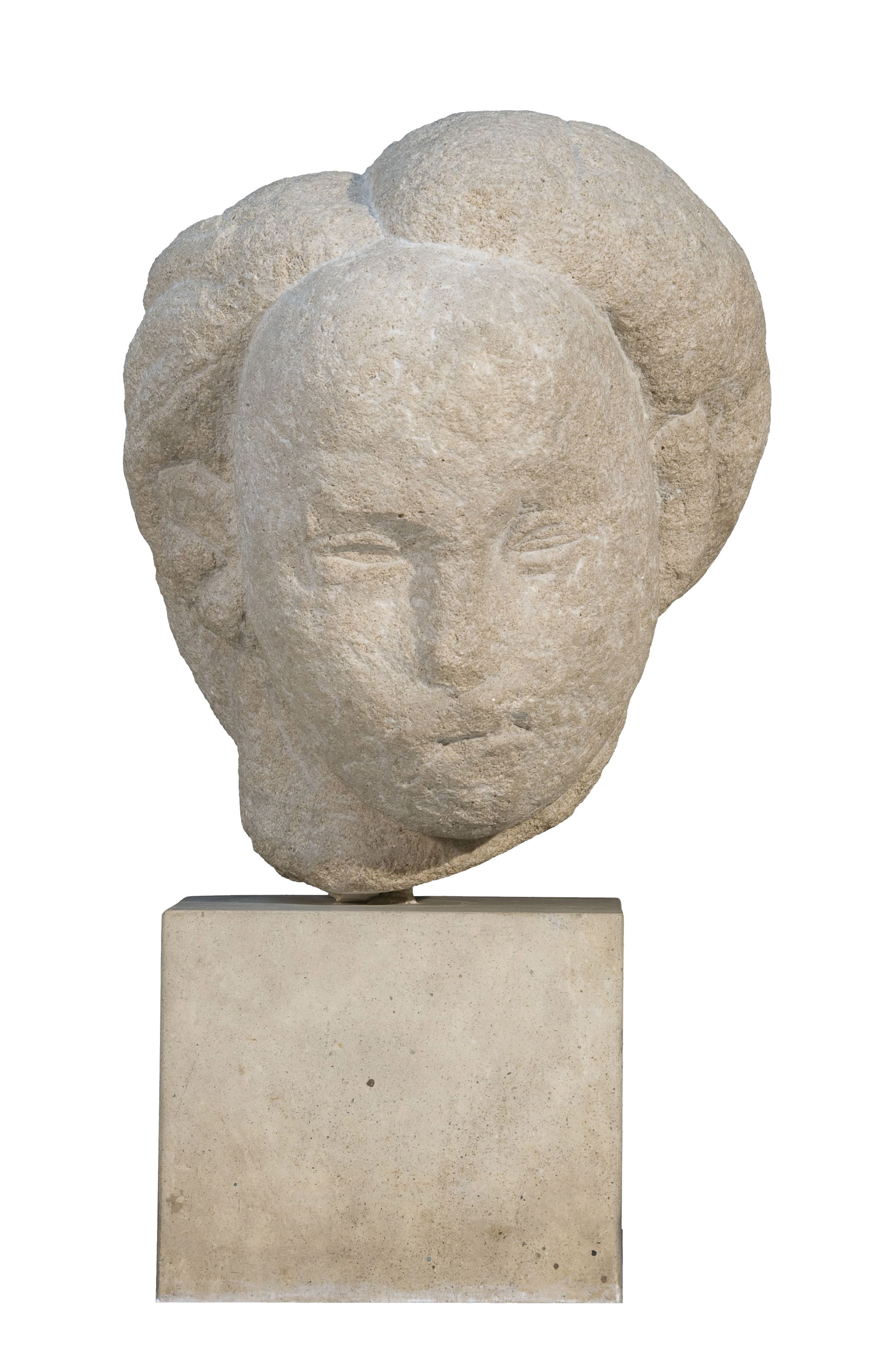The Danaïde dates from 1908-1909, a time when Brâncuşi was eagerly trying to find his own way. The distillation of forms, typical for the Romanian artist’s modern approach, is eye-catching. The woman’s rotund face, her broad forehead, the hair dress and the slightly bent gaze will become recurrent features in other portraits made by the artist such as those of Mlle Pogany. From this perspective, the sculpture opens new paths in the artist’s oeuvre. It was probably called the Danaïde, a reference to Greek mythology, when it was submitted for an exhibition, the new title being considered more evocative that the simple “Girl’s Head” written by Brâncuşi on the back of a contemporary photograph.
The sculpture’s archaic, weathered look is endorsed by the porous, matt, rough quality of the Vratsa stone, a granular type of limestone. The sculpture marks Brâncuşi’s departure from Rodin as much as from academism, being one of the earliest modern attempts at redefining (abstract) sculpture.



